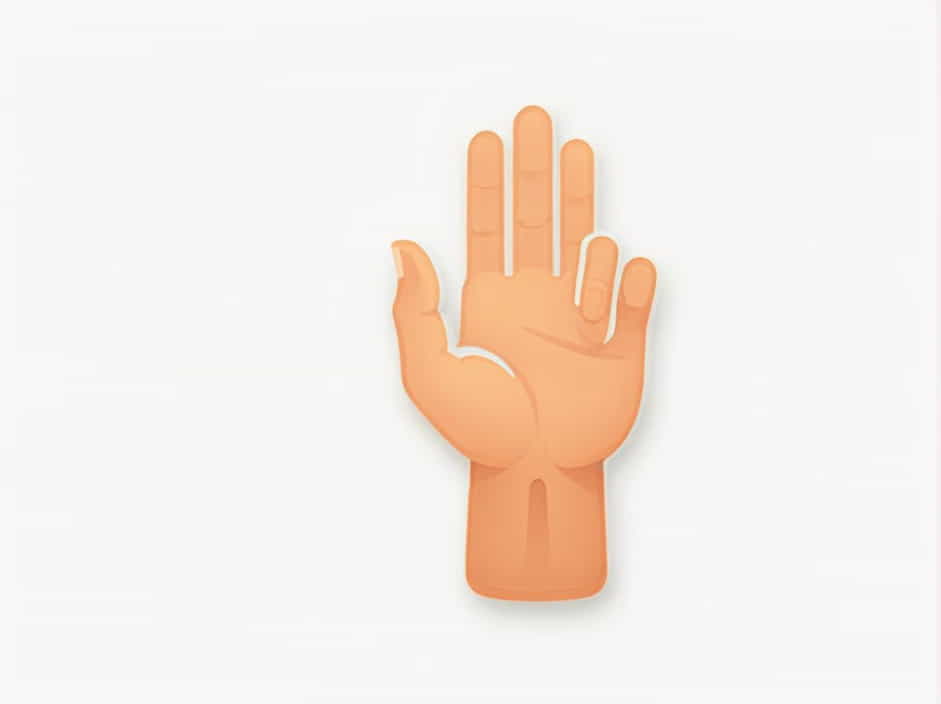Finger movement is essential for performing daily tasks such as writing, typing, and gripping objects. One of the key movements of the fingers is abduction, which refers to the movement of the fingers away from the midline of the hand. Several muscles in the hand are responsible for this function, playing a vital role in dexterity and coordination.
In this topic, we will explore the muscles that abduct the fingers, their anatomy, function, and clinical significance.
Understanding Finger Abduction
What Is Finger Abduction?
Finger abduction is the movement of the fingers away from the central axis of the hand, which is typically aligned with the third (middle) finger. This action allows for wider grip formation and precise hand movements.
For example, when spreading the fingers apart, the muscles responsible for abduction contract to pull the fingers away from the midline.
Importance of Finger Abduction
Finger abduction plays a crucial role in:
- Fine motor skills – Necessary for tasks like playing musical instruments and typing.
- Grip adjustments – Helps in holding objects of different sizes and shapes.
- Hand coordination – Works together with other finger movements for functional dexterity.
Muscles Responsible for Finger Abduction
Several muscles contribute to abducting the fingers. These muscles are primarily located in the hand and are classified into intrinsic muscles, which originate and insert within the hand itself.
1. Dorsal Interossei Muscles
Anatomy and Location
The dorsal interossei are four intrinsic muscles of the hand located between the metacarpal bones. They are situated on the back (dorsal side) of the hand and run between the metacarpals.
Function
- Primary abductors of the fingers
- Assist in flexion of the metacarpophalangeal (MCP) joints
- Help in extension of the interphalangeal joints
Each dorsal interosseous muscle is associated with a specific finger:
- First dorsal interosseous – Abducts the index finger
- Second dorsal interosseous – Abducts the middle finger (toward the radial side)
- Third dorsal interosseous – Abducts the middle finger (toward the ulnar side)
- Fourth dorsal interosseous – Abducts the ring finger
The little finger is not abducted by the dorsal interossei because it has a separate abductor muscle.
2. Abductor Digiti Minimi
Anatomy and Location
The abductor digiti minimi is located on the ulnar side of the hand and is part of the hypothenar muscle group.
Function
- Abducts the little finger (fifth digit)
- Assists in flexion of the MCP joint of the little finger
This muscle is unique because, unlike the other fingers, the little finger has a dedicated abductor muscle separate from the dorsal interossei.
3. Abductor Pollicis Longus (For Thumb Abduction)
Anatomy and Location
The abductor pollicis longus is located in the forearm and is one of the extrinsic muscles responsible for thumb movement.
Function
- Abducts the thumb (first digit)
- Assists in thumb extension at the carpometacarpal (CMC) joint
While this muscle is not involved in finger abduction, it plays a crucial role in thumb mobility, allowing opposition and gripping functions.
Nerve Supply of the Abductor Muscles
The muscles responsible for finger abduction are primarily controlled by the ulnar nerve, except for the abductor pollicis longus, which is innervated by the radial nerve.
- Dorsal interossei – Ulnar nerve
- Abductor digiti minimi – Ulnar nerve
- Abductor pollicis longus – Radial nerve
Damage to the ulnar nerve can lead to weakness in finger abduction, affecting hand function.
Clinical Conditions Affecting Finger Abduction
1. Ulnar Nerve Palsy
Damage to the ulnar nerve can impair the function of the dorsal interossei and abductor digiti minimi, leading to:
- Weak or absent finger abduction
- Loss of grip strength
- Muscle wasting (atrophy) in the hand
2. Stroke and Neurological Disorders
Stroke or nerve damage affecting the motor cortex or spinal cord can impact hand muscle coordination, reducing the ability to abduct the fingers.
3. Dupuytren’s Contracture
A condition where fibrous tissue thickens in the palm, leading to finger contractures. This can limit finger movement, including abduction.
4. Carpal Tunnel Syndrome
While primarily affecting the median nerve, severe cases can involve weakness in hand muscles, affecting coordination and fine movements.
Exercises to Strengthen Finger Abduction Muscles
To maintain strength and dexterity, finger abduction exercises are beneficial.
1. Finger Spread Exercise
- Place your hand flat on a table.
- Spread your fingers apart as far as possible.
- Hold for 5 seconds, then relax.
- Repeat 10-15 times.
2. Rubber Band Resistance Exercise
- Wrap a rubber band around your fingers.
- Spread your fingers against the resistance.
- Hold for a few seconds and release.
- Repeat 10-15 times.
3. Hand Squeeze and Release
- Squeeze a stress ball.
- Slowly release while spreading fingers apart.
- Repeat 10 times.
These exercises help improve strength, flexibility, and coordination in the fingers.
The muscles responsible for abducting the fingers include the dorsal interossei and the abductor digiti minimi. These muscles play an essential role in hand movement, dexterity, and coordination. Proper functioning of these muscles depends on the ulnar nerve, and any damage to this nerve can impair finger abduction.
Understanding the anatomy and function of these muscles is important for medical professionals, therapists, and individuals recovering from hand injuries. Strengthening exercises and proper care can help maintain hand function and prevent movement disorders.
